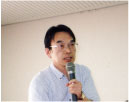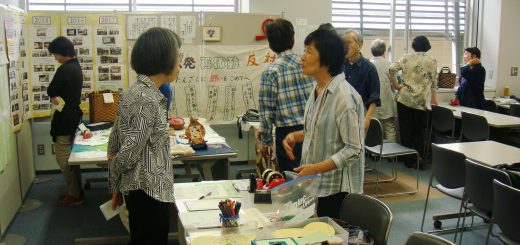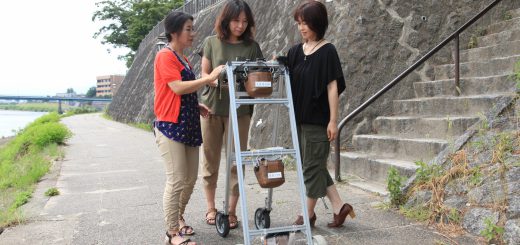Anti-Nuke Who’s Who Dr. Saburo Murata: an activist doctor, walking alongside the Hibakusha in their suffering Nuke Info Tokyo No. 96
 For many years Dr. Saburo Murata has been treating atomic bomb victims of Hiroshima and Nagasaki and Minamata disease* patients. He also works with nuclear industry workers who have been exposed to radiation, walking alongside them in their suffering, as he continues his wide-ranging activities.
For many years Dr. Saburo Murata has been treating atomic bomb victims of Hiroshima and Nagasaki and Minamata disease* patients. He also works with nuclear industry workers who have been exposed to radiation, walking alongside them in their suffering, as he continues his wide-ranging activities.
I have known him since 1992, when CNIC ran the Japan office for the International Symposium on the Effects of the Chernobyl Accident in Minsk, the capital of Belarus. I accompanied him there on that occasion. In Minsk he spoke of the “underestimation of the damage caused by the Hiroshima and Nagasaki atomic bombs.” He has also given reports on the health situation of Japanese Hibakusha and nuclear industry workers at places such as the World Conference of Nuclear Victims.
At the moment negotiations have begun with the Ministry of Health, Labor and Welfare in regard to the application of Mitsuaki Nagao for recognition as having a work related illness. He incurred multiple myeloma** as a result of exposure to radiation through his role as supervisor of work on the piping system of nuclear power plants. Dr. Murata submitted a persuasive medical opinion on the cause-effect relationship between Nagao’s radiation exposure and the onset of his disease. He is proving to be a powerful weapon in the negotiations.
Saburo Murata was born in Kochi Prefecture in 1947. Many of the fishing boats and the fishermen in the region of the Bikini hydrogen bomb test were from Kochi Prefecture and the movement to ban nuclear weapons was very strong there. When he was an elementary school pupils, he participated in peace marches with his father, who was a teacher. Activities such as this brought him into contact with the issue of nuclear weapons and radiation and he was raised in an environment where the anti-nuclear movement was a topic of daily conversation.
While he was wrestling with his studies to be a doctor at Osaka University, he continued to visit Hiroshima and Nagasaki to hear the stories of the Hibakusha and it was during this period that he decided to make the Hibakusha issue his life work.
Since 1978 he has been treating atomic victims etc at the Han-nan Central Hospital, while simultaneously holding down the posts of head of radiology and internal medicine and head of the medical examinations center.
Since the 1999 Tokaimura criticality incident, he has been doing health surveys of the local residents. “I always want to take as my starting point for health consultations the position of the people whose access to medical treatment and to society has been obstructed,” says Dr. Murata, who really is a great source of salvation for people who are suffering because their health has been damaged.
* Minamata disease: Disease caused by mercury poisoning and first identified in the Japanese fishing town of Minamata in 1956.
** Multiple myeloma (also known as myeloma or plasma cell myeloma) is a hematological cancer. It is a cancer of the plasma cell, an important part of the immune system that produces immunoglobulins (antibodies) to help fight infection and disease. Source: The Multiple Myeloma Research Foundation (www.multiplemyeloma.org/)
By Mikiko Watanabe


